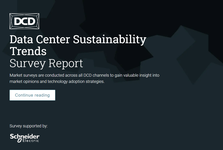More than two-thirds of IT requests for proposal (RFP) include a sustainability component, according to recent Canalys research. This is because businesses want to reduce their carbon footprint, and one way to do it is by investing in solutions that meet sustainability standards.
When it comes to uninterruptible power supplies (UPS), environmentally-minded businesses need to be discerning in what products they choose to buy. A newer class of UPSs is now available that meets sustainability standards, giving businesses an opportunity to invest in solutions that help them meet net-zero goals.
There are three main criteria buyers should consider when making a UPS purchase – energy efficiency, materials used in the product, and a practice called “circularity,” which involves the reuse of components at the end of life.
Energy efficiency
Efficient use of energy is more important than ever. Not only have companies become more sensitive to how much power they consume, but they also want to keep their costs down at a time when energy prices are soaring.
With that in mind, a UPS should consume the least amount of energy possible. When shopping for UPSs, companies should look for the Energy Star 2.0 label, or a similar designation depending on geography, for reassurance they are buying an efficient unit which translates into a lower carbon footprint. Energy Star verifies the efficiency of different UPS and provides a search tool to find the most efficient UPS given your specific criteria.
Build materials
Materials used in UPS construction help define its sustainability status. Businesses should seek out units that use lightweight metals and recycled materials.
For example, some new models have replaced much of the plastic used on the front bezel with lightweight aluminum, 75 percent of which is recycled. The overall quantity of plastic used in those units weighs 2Kg, down from 14Kg in older, comparable models. This is a significant reduction with a much lower carbon impact.
Another important factor associated with device construction is the amount of energy consumed in the production process, which is known as the “embodied carbon footprint.” Energy used to manufacture the lighter, aluminum units is much less than with other models, considerably reducing the carbon footprint.
Circularity
Traditionally, most of the materials in a device are discarded at the end of life.
A newer class of modular UPSs is built with circularity in mind, so most components are reusable. The modularity aspect itself enables buyers to acquire only the capacity they need.
As a company’s needs grow, they insert power and battery modules in a unit’s empty slots. This makes it possible to upgrade without buying a whole new unit, reducing the environmental impact.
Other sustainability features include the power modules. When a power module needs maintenance or replacement, the module can be removed without discarding the entire unit. Instead, those modules can be repaired at the factory and sold as refurbished items.
Connectivity and remote monitoring capabilities in these units also contribute to sustainability, allowing IT teams to address issues early – before they can cause a failure that will be costlier to fix.
Choosing more sustainable uninterruptible power supplies
At Schneider Electric, we have been focused on creating sustainable UPS solutions. For example, the Smart-UPS Modular Ultra series delivers all the sustainability features discussed above.
These units are built with circularity in mind from the design phase. They also meet the highest levels of energy efficiency in the market today, including achieving Energy Star 2.0 certification in the United States.
The result is a family of UPS devices that have the lowest embodied carbon footprint of any comparable model in the market today. To take a deeper dive into evaluating and selecting sustainable UPSs for your organization, access the new eguide, “A framework for assessing a single-phase UPS’s environmental sustainability.”
More from Schneider Electric
-

Sponsored How to get long term value from a modular single-phase UPS
Six factors to consider to lower the total cost of ownership of your UPS
-

Sponsored Why companies are turning to IT solution providers to make their Edge computing sites more sustainable
And why the right partner is critical to success
-

Data Center Sustainability Trends – Survey Report
A survey report based on research conducted by DCD looking at trends within sustainability


